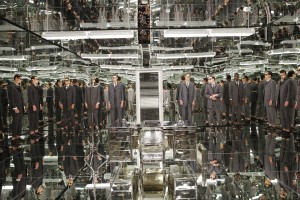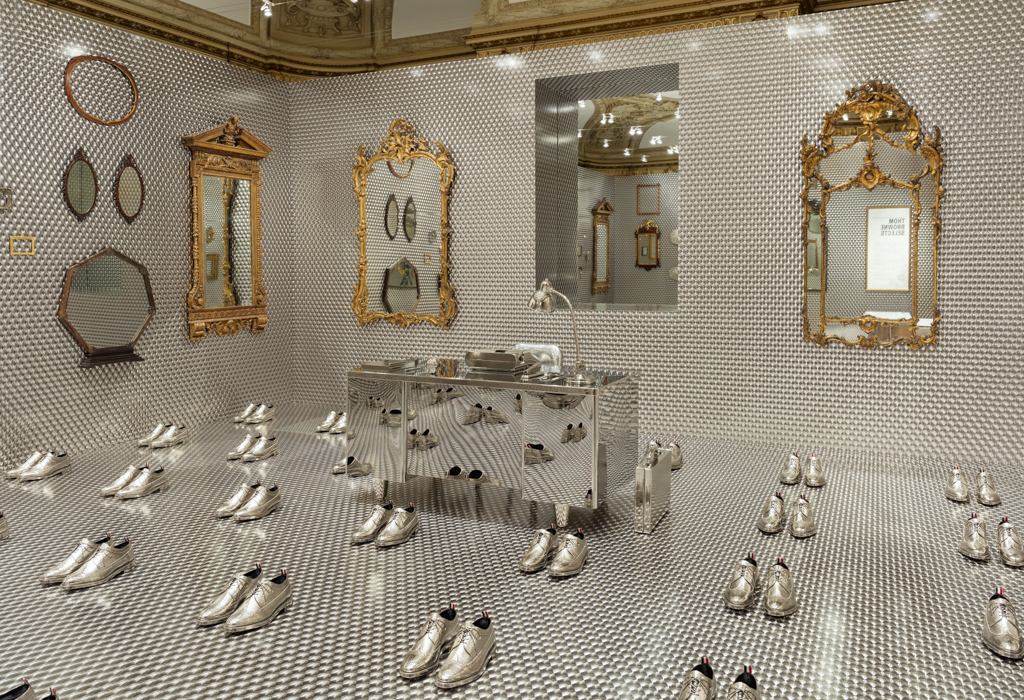This week’s entries are dedicated to objects featured in the exhibition Thom Browne Selects (see installation image above), currently on view at Cooper Hewitt through October 23, 2016.
The following is an excerpt from a conversation that I had with American fashion designer and National Design Award winner, Thom Browne, about his museum exhibition and design process in creating a fashion collection. We discussed his exhibition selection of mirrors and frames from the museum’s collections and how ideas of reflection and uniformity tie into his work as a fashion designer.
Matilda McQuaid: Talk about the idea of reflection. What do you want people to see in themselves when they see their reflections wearing your clothes?
Thom Browne: I want people to see themselves and not the clothing, and to see the confident side of themselves and appreciate their individuality. The clothes should just enhance the person. That is what’s behind Thom Browne Selects, with all the reflective surfaces—mirrors, mirrored walls and floors, and silver-plated shoes and desk. It is the idea of making the true individual stand out by looking at one’s reflection and appreciating it. At the same time, everybody feels that they are part of this installation, as opposed to just viewing an installation at a museum. Also integrating objects—a briefcase or desk—that I feel are banal to most people, and then silver plating them, elevates them to a level where they can be presented with the museum’s collection.
MM: Is there anything else that you want visitors to experience in your fashion shows and the exhibition?
TB: Sometimes it’s as simple as people enjoying themselves and not taking themselves so seriously. Enjoy it. Maybe not like it! These are important reactions to have when you see design.
MM: Talk about how architecture and product design have influenced your work.
TB: Architecture is one of the more important areas that has influenced me. It’s not always specifically mid-century, as I admire the work of sixteenth-century Italian architect Andrea Palladio. But the Lever House and the Seagram Building in New York are two of my favorite buildings in the world. Their very clean, geometric forms have more meaning for me than the amazingly curved buildings prevalent today. Inspiration from buildings like these as well as the original World Trade Center towers translates into why I like tailoring: its strong edges and a look that seems uncomfortable in its strict form.

Installation for New York Fashion Week Men’s, July 2015.
Matilda McQuaid is Deputy Director of Curatorial and Head of Textiles. She also coordinated this exhibition with Thom Browne.
